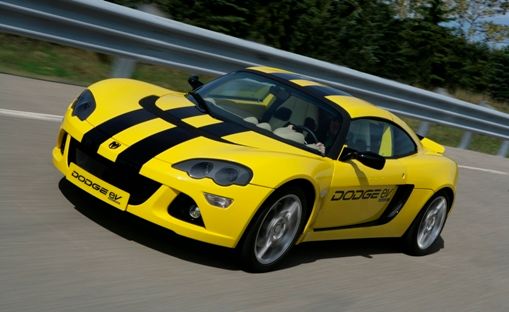It seems that there is no love lost between General Motors and Chrysler. In an apparent move to challenge GM a week after the unveiling of the Chevrolet Volt, Chrysler presented three electric vehicles – a Dodge sports car, a Jeep Wrangler, and a Chrysler Town & Country minivan. The company also disclosed plans to release one of the cars in 2010 for both the European and North American markets.
All three vehicles were developed by ENVI, a division of Chrysler LLC, which is dedicated to the creation of production electric vehicles and other advanced-propulsion technologies.
The Dodge all-electric Performance Sports Car was developed in partnership with Lotus Cars Ltd. It gets its power from a lithium ion battery pack (similar to the Chevrolet Volt,) which allows the car to run for approximately 150 miles on a single charge. The vehicle has been compared to the Tesla->ke1842, whose body is based on the design of the Lotus Elise->ke1678. In the case of the Dodge, it has been based on the larger Lotus Europa->ke2056.
The Jeep Wrangler and Chrysler Town & Country are both hybrid vehicles able to travel 40-miles when operated in all-electric mode. Designers chose to use a small, 900cc gasoline engine to power the generator which, in turn, provides power to run an electric motor. This setup is the same for the two vehicles; plus there is the option to either increase or decrease the size of the gasoline engine depending on need.
Doug Quigley, Chrysler’s product engineering executive, says that, in gasoline mode, the Town & Country could do at least 50 mpg while producing just half of the CO2 emissions of its non-hybrid version.
According to Frank Klegon, executive vice president of Chrysler LLC’s product development, they foresee that about 50% of cars sold in the U.S. by 2020 would have electric powertrains. It is the company’s plan to market existing versions of their cars with some form of electric power.
This is where GM and Chrysler hold opposing views. While the former focuses its efforts on new products, the latter has decided not to design new vehicles at all. Chrysler CEO Bob Nardelli explains that “We elected to put our money and resources into the technology and not into the platform and body.”
Klegon adds “As any new technology comes out, there is a cost. Our goal is to work with battery suppliers to keep the cost down.” The company is currently exploring advanced energy storage technologies in cooperation with General Electric and the United States Department of Energy. "Chrysler's partnership with General Electric combines the electric-drive technology demonstrated in the Chrysler Electric Vehicles, with GE's research and development of advanced energy storage systems. Our collective goal working with the DOE is to develop a new, integrated energy-storage system to make electric vehicle battery packs smaller and significantly less expensive than current designs."
"One of the challenges with electric vehicles is finding a battery with the correct balance between power -- for example, during vehicle acceleration -- and energy for long driving range," said Klegon. "We believe that combining two unique battery chemistries -- one biased toward power and the other toward energy -- into a single battery pack is very promising for a future Chrysler Electric Vehicle."
Chrysler LLC says that they will be bringing these new cars to the market at prices much lower than the competition’s. A similar strategy was employed when the Chrysler Aspen and Dodge Durango hybrids were launched in June this year. Both vehicles were introduced with prices at least $8,000 lower than other brands in their class.

